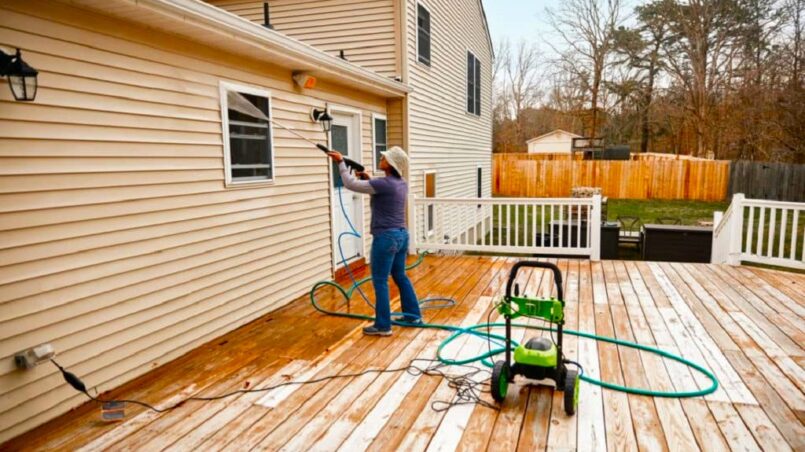We all know that regular cleaning is essential to keep our homes looking great. However, did you know that a good pressure wash can also protect your property from damage?
Dirt, moss, and grime can do more than look unattractive; they can eat away at surfaces. Ensure these contaminants are eliminated before applying paint, sealants, or stains.
How It Works
Few home tasks are as satisfying as brandishing a powerful spray nozzle to blast away dirt, mildew, mold, grime, and cobwebs quickly and thoroughly. Adequately done, pressure washing can give your exterior surfaces a fresh paint-like appearance.
But before you lace up your protective gear and grab your garden hose, there are a few things you need to know to ensure safe and successful results. This ultimate guide to house pressure washing has all the tips to confidently complete this task, from prepping surfaces to choosing the right equipment.
Before you start, scan the area around your house for potential safety hazards. And cover any plants, flowers, or furniture that could get harmed by the high-pressure water jets. It’s also essential to check whether your home has lead-based paint, which can be damaged by forceful water pressure and may break into tiny pieces that can contaminate the air and soil.
Preparation
Pressure washing is a fast and effective way to remove dirt, moss, mold, mildew, and other types of stubborn stains from surfaces around your home. It’s safer and quicker than traditional scrubbing and doesn’t require harsh chemicals or hours of bending and stretching to reach high spots.
If you’re planning to pressure wash your own home, there are a few things you need to prepare before the cleaning begins. For starters, clear out any inanimate objects that might get blown away by the powerful stream of water. Also, cover any outdoor electrical outlets that may be exposed to water and could pose a safety risk.
Brick homes are especially susceptible to structural damage if they’re not adequately prepared for pressure washing. To avoid this, first survey the surface to look for cracks and holes between bricks. These should be repaired before pressure washing to prevent moisture and rot from causing further damage.
Safety
Pressure washing removes dirt, mildew, and grime from concrete driveways, brick patios, and siding surfaces. But using the machine correctly is essential to avoid injuries like cuts, splinters, and cracks in your cleaning surfaces.
Safety tips will help you get the most out of your pressure washer without compromising results or health. It is essential to wear safety goggles to protect your eyes from potential harm, such as flying debris and water spray. Gloves are also recommended to keep your hands dry and ensure a firm grip on the equipment. Finally, ear protection is essential to prevent hearing loss from the loud noise of the machine’s motor and spraying water.
Additionally, it would help if you never pointed the pressure washer at people or pets to prevent severe injuries. Be mindful of your surroundings as you work, and be on the lookout for trip hazards like lawn furniture or power lines. You should also avoid working at heights to prevent falls, especially when using a ladder.
Equipment
Investing in the right equipment is essential for starting your pressure washing business. High-quality machines are more efficient, allowing you to complete jobs in less time and make more money. They also have a better track record of durability.
The correct pressure washer allows you to clean a wide range of surfaces. This product can clean various outdoor surfaces, including furniture, concrete, decks, brick paths, and even specialty wood such as teak.
Before pressure washing a house, remove any objects from the area that the water could damage. Unplugging or covering any electrical outlets is also a good idea. It is easy to trip over exposed cords when using a power washer, which can cause a jolt of electricity if they come into contact with the water. Additionally, covering plants and flowers with plastic sheeting protects them from damage.














